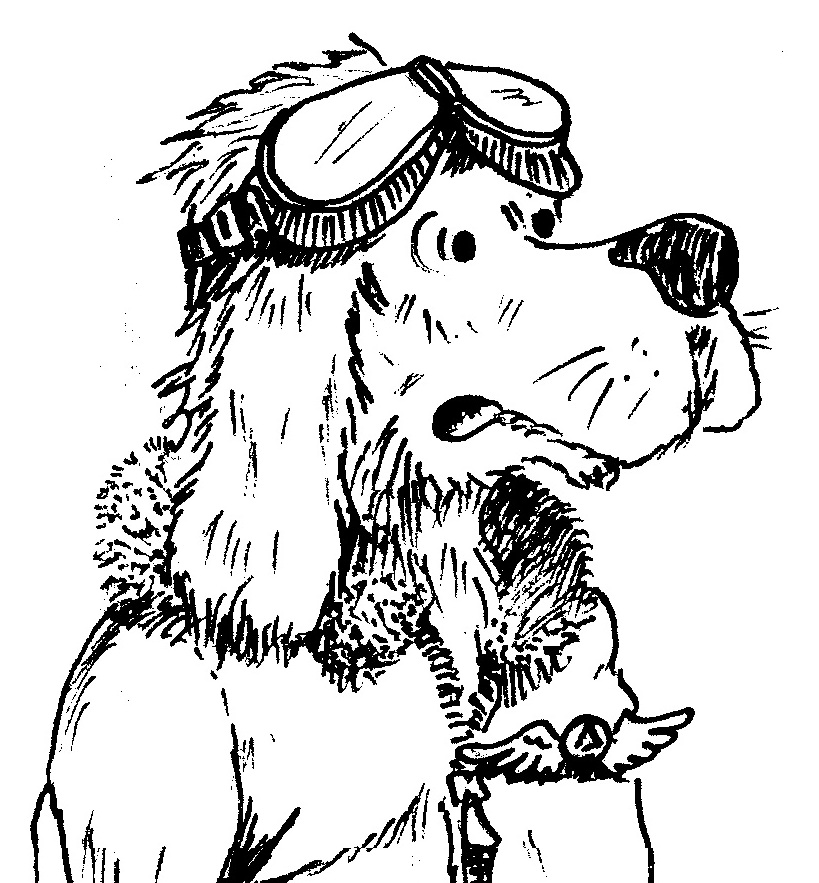 |
from The Big Sky Weekly Newspaper
|
|
by Thomas J. Nagorski
The year's calendars are hung, the Christmas tree keeps the garbage can company, you've re-financed the house to buy more batteries, and you're still finding bits of cookies in the carpet. Yes, the holidays are over. Time to tackle that New Year's Resolution. If 1998 is the year you'll finally learn to fly, we're here to help! After the initial resolve to take flight, the next question is, fly what? By comparing pilot certificates to motor vehicle licenses you recognize there are multiple ways to take to the skies. If one pursues a license to drive the choices are limited. You can drive practically anything non-commercially: automobiles, pickup trucks, mini vans, motor homes, retired school buses, or big wheels. To add excitement, a motorcycle endorsement may be added to the basic license. Commercial driver's permits are more difficult to obtain, but will be necessary if you receive compensation for your efforts. A great many motorized vehicles require no license or training for their use. These include all-terrain vehicles, snowmobiles, earth-moving equipment, lawn mowers, and agricultural tractors. Ah, if only it were that simple in aviation. Aircraft offer unique modes of travel. With respect to pilot licensing procedures, each craft is placed in a category based on its general method of producing lift. For each category of aircraft a pilot may be licensed to operate there may be an additional class. These aircraft all function similar to others in the same category, but differ enough between classes to require additional training. The down side to such complexity in licensing is that a pilot is limited to operating only aircraft in the category and class for which they are rated. On a positive note, you only need to study principles which pertain to your specific needs. This specialization contributes to general aviation's phenomenal safety record. And, much of the knowledge obtained for one license applies when pursuing other category or class ratings on your pilot certificate. In the broad category of aircraft types, you may train and be licensed to fly: airplanes, rotorcraft, gliders, lighter-than-air machines, and the newly-added design called "power lift." In each of these aircraft categories you will be licensed for a specific class of operations. For example, the airplane you fly will be either a single-engine or a multi-engine. Additionally, the airplane will differ depending on its ability to light on land or water (sea). The most common pilot certificate held is for operating an airplane, single-engine land. You might see this abbreviated ASEL. With this knowledge, terms such as ASES, AMEL, and AMES make sense. If you long to fly rotorcraft, the classes are for helicopter or gyroplane. Never heard of a gyroplane? It has rotors to produce lift like a helicopter, but these blades are unpowered. The force of the wind from its forward travel causes them to spin and produce lift. The gyroplane is propelled by an engine with a propeller, similar to an airplane. The gyrocopter can not hover like a helicopter. Because of the rarity of gyroplanes, gyroplane-licensed pilots are scarce. Gliders have no separate class, although specific training and instructor endorsements are necessary for launch methods different than that which you used for your flight test. Gliders takeoff by aerotow, ground launch, or self-launch methods. By-the-way, pilot licensing makes no distinction between a glider and a sailplane. Mostly, it's a matter of pride and function. A glider is considered a craft designed primarily to, well, glide, with limited performance to remain aloft in thermals. A sailplane has enough performance to remain aloft and actually gain altitude as it soars from one lift source to another. The lighter-than-air category provides greater variety than the casual observer might expect. Some of the training and endorsements required are not specifically mandated by federal regulation, but rather, are the result of unique characteristics of specific designs. The classes of lighter-than-aircraft are airship and free balloon. Your airship training will differ depending on whether you fly a rigid or a semi-rigid ship. Free balloons come in hot-air and gas balloon varieties. There are a few lucky pilots who have obtained certificate ratings for every category and class of aircraft available. That is a considerable accomplishment. There is a new category rating for these folks to pursue, that for power-lift. Think of a power-lift aircraft as a cross between an airplane and a helicopter. It has engine nacelles mounted on its wingtips, with oversized propellers which act as rotors. By pivoting the engines the power-lift vehicle can takeoff like a helicopter, then rotate the nacelles so that the blades act as propellers while the wings generate lift in high-speed flight. The difficulty in obtaining a power-lift rating is that none exist in the civilian market. The military has been designing these for years, and only now are they receiving the first aircraft, specifically, the V-22 "Osprey." As you prepare for your flight training remember becoming a pilot is the easy part. Remaining a safe pilot is a life long pursuit, because the learning never ends. And, if you get bored puttering about in single-engine land airplanes, there's plenty more adventure to be found chasing new ratings.
Happy (con)trails. See you upstairs --
|

.gif) (c) 1998, 2024
(c) 1998, 2024